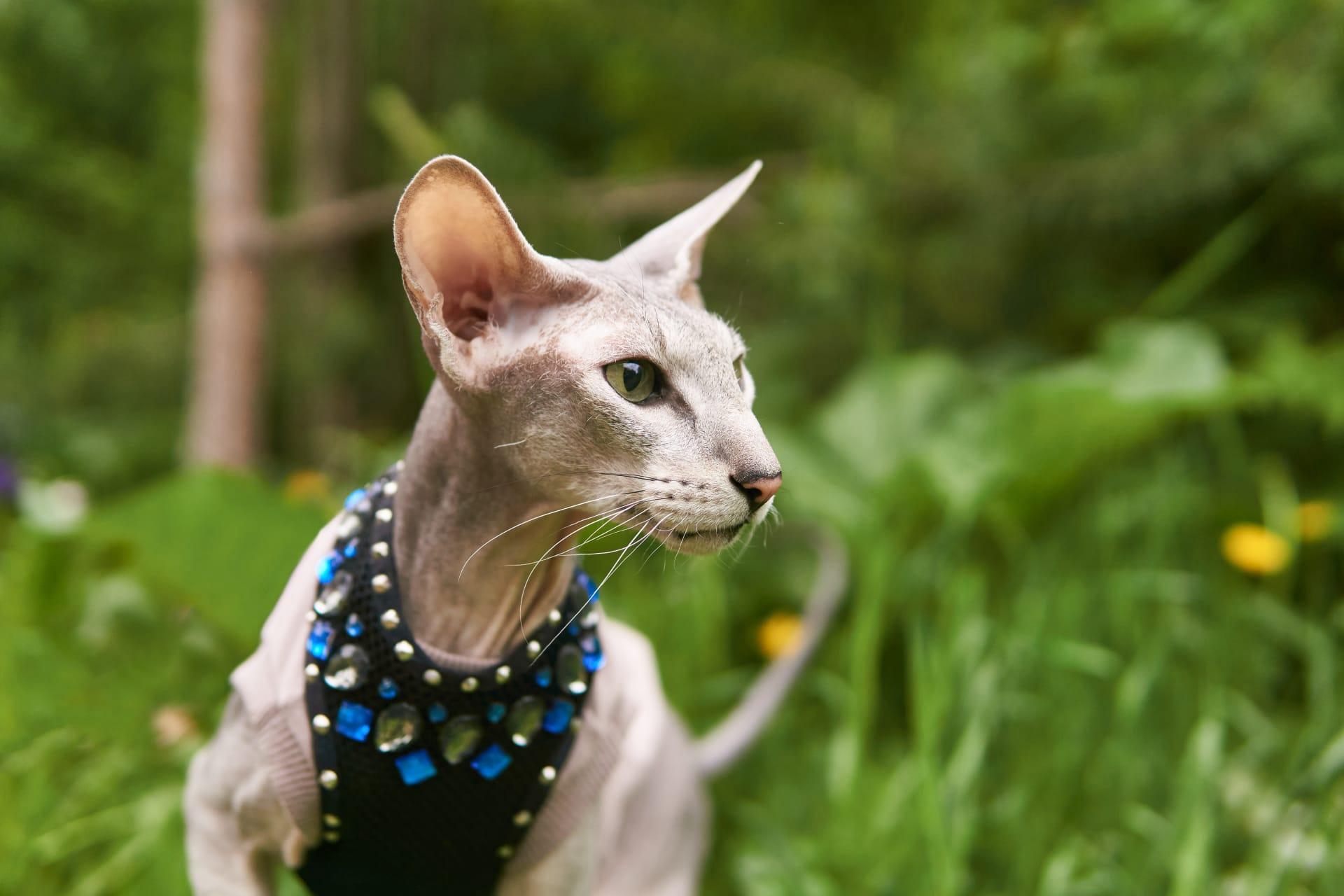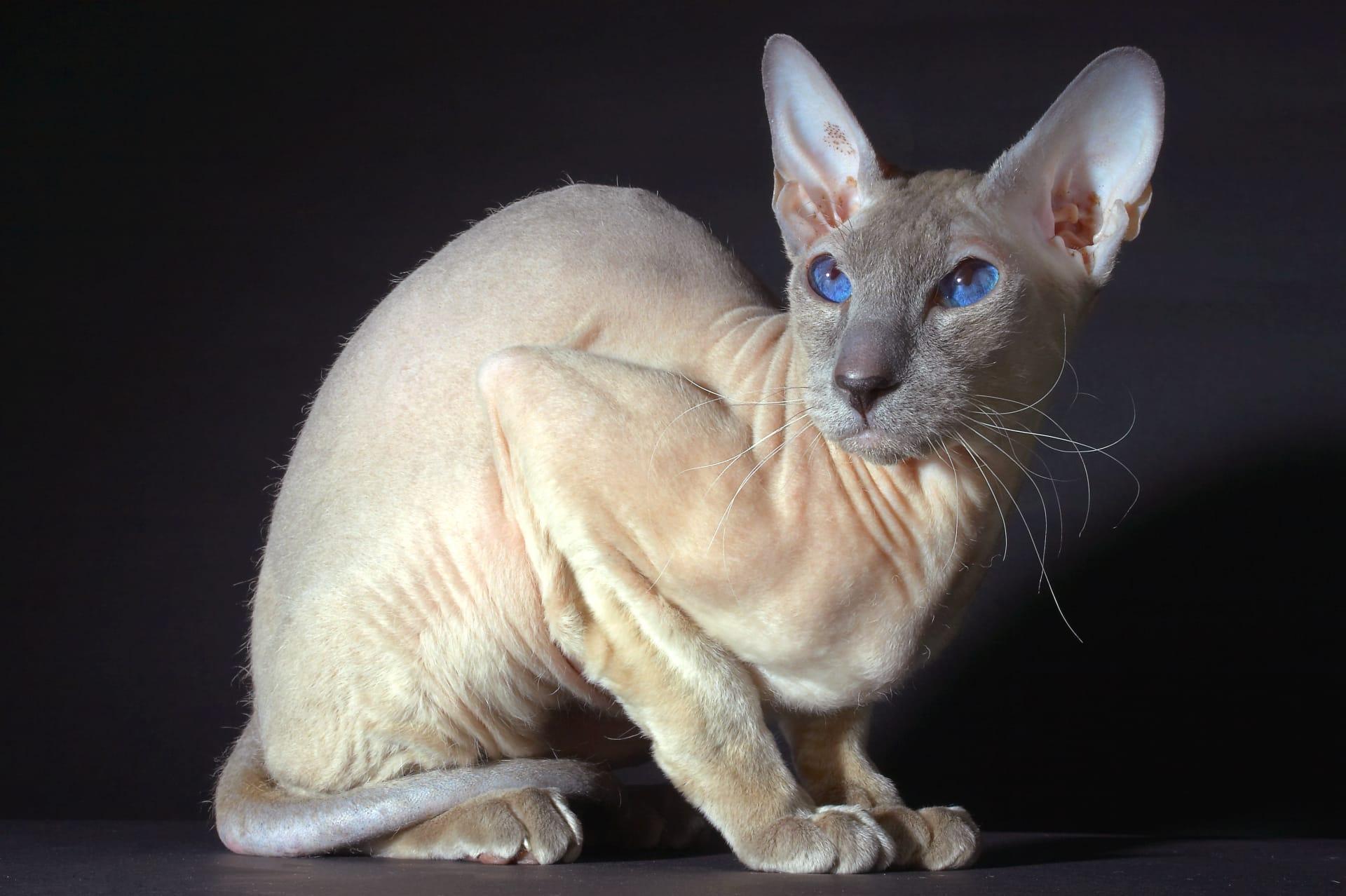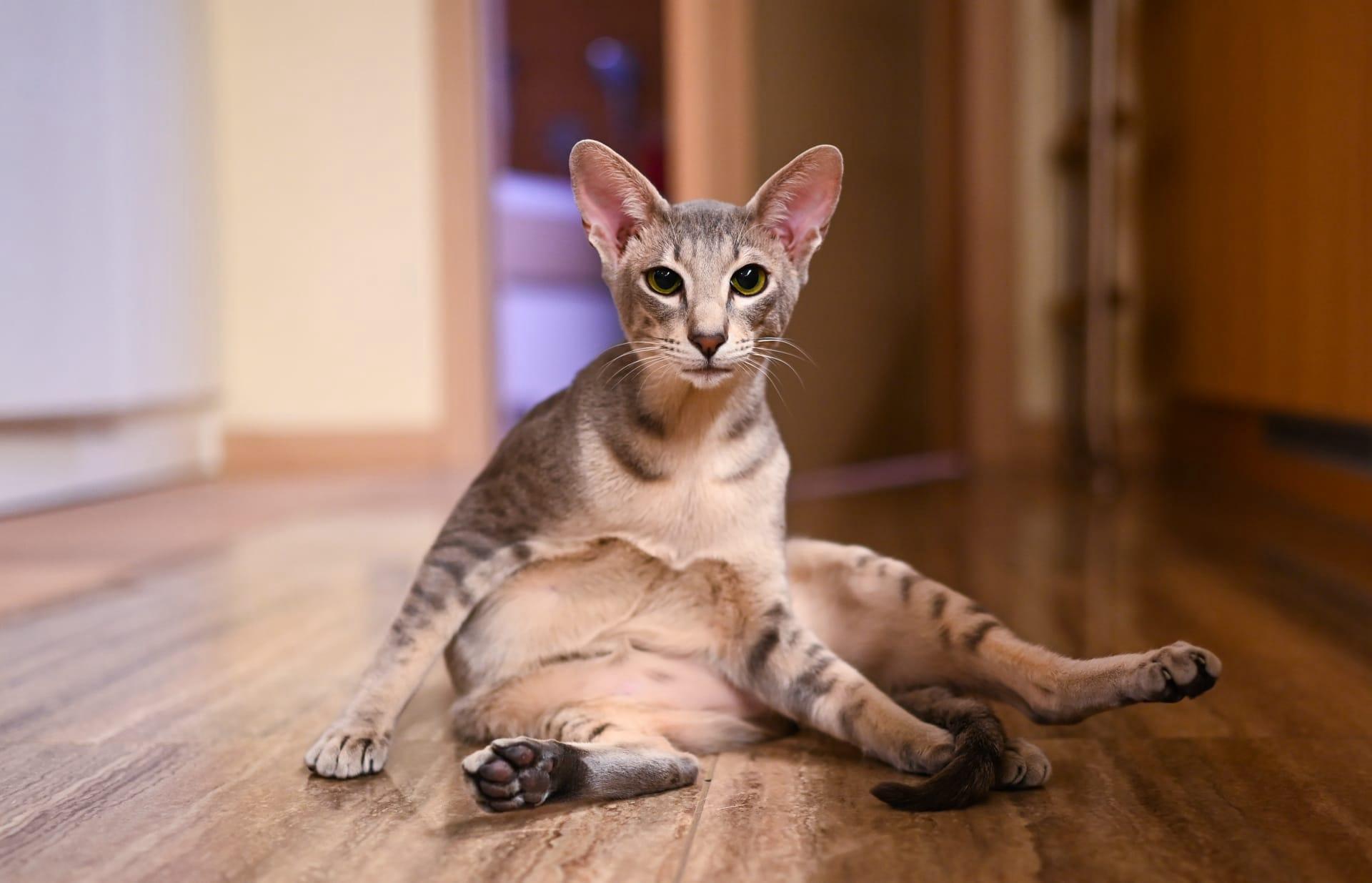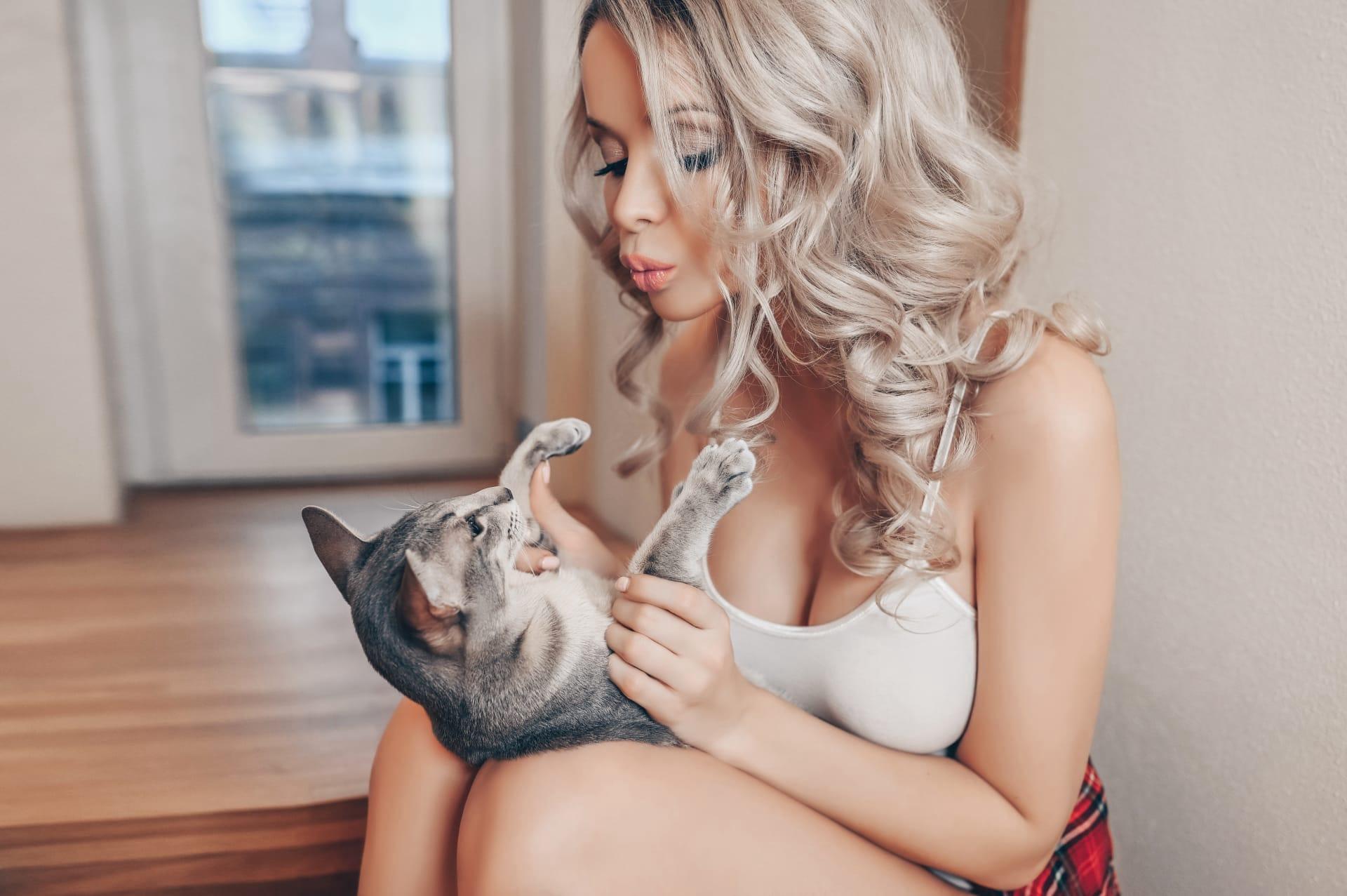Peterbald Cat
- Home /
- Mini Encyclopedia /
- Animal /
- Peterbald Cat
1
The Peterbald Cat is a distinctive breed within the feline world, classified under the Felidae family. Originating from Russia, this breed is known for its unique appearance, primarily characterized by its lack of fur or a coat that ranges from bald, to velvety, to a brush-like texture. Their slender, muscular body, elongated head, and large set of ears set them apart within the domestic cat species. The genetic roots of the Peterbald trace back to a deliberate crossing between the Russian Don Sphynx (Don Hairless) and an Oriental Shorthair, aiming to create a cat with a novel appearance but retaining the sociable and intelligent traits of its ancestors.
As for its distribution, the Peterbald Cat is primarily found within Russia and various parts of Europe, but it has gradually gained popularity and spread across other continents including North America and Asia. Despite their exotic appearance, they remain a relatively rare breed compared to more widespread domestic cats. The breed's popularity is on a slow but steady rise, thanks to its affectionate nature and the increasing interest in unique pet breeds among cat enthusiasts worldwide. Their adaptability to various climates, combined with their sociable demeanor, makes them a cherished pet in households far beyond their Russian origins.

2
Question: Do Peterbald Cats suffer from health issues due to their lack of fur?
Answer: A common misconception about Peterbald Cats is that their unique coat (or lack thereof) leads to numerous health issues, particularly skin problems. However, while it's true that their skin requires some care to prevent issues such as sunburn or cold exposure, Peterbald Cats are generally as healthy as their furry counterparts. Their skin health largely depends on regular grooming and protection from extreme weather, rather than an inherent vulnerability to diseases. It's also worth noting that the gene responsible for their hairlessness is not linked with the genetic disorders associated with some other hairless breeds, making the Peterbald a robust breed with proper care.

3
Peterbald Cats share a deep bond with humans, often described as more dog-like in their behavior than typical felines. They are known for their affectionate and clingy nature, frequently seeking the company of their human families. They thrive on interaction and can become depressed if left alone for extended periods. Their intelligence and curious demeanor make them excellent companions, capable of learning tricks and commands, and they are known to follow their owners around, participating in daily activities.
Additionally, Peterbalds are excellent communicators, utilizing a wide range of vocalizations to express their needs and feelings. This communicative ability, combined with their social nature, fosters a strong relationship between Peterbalds and their human counterparts. They are adaptable to living with other pets and are particularly good in homes with children, thanks to their gentle and patient temperament. Their unique appearance, combined with their loving and sociable nature, makes them not just pets but beloved family members.

4
The origin of the Peterbald Cat dates back to 1994 in St. Petersburg, Russia, where this breed was first developed through a planned breeding between a male Don Sphynx named Afinogen Myth and a female Oriental Shorthair, Radma von Jagerhov. This intentional crossbreeding aimed to create a cat breed that combined the hairless gene of the Don Sphynx with the elegant body shape and personality traits of the Oriental Shorthair, leading to the birth of a breed with distinctive physical and temperamental characteristics.
Since its inception, the Peterbald breed has undergone an evolutionary journey, with breeders selectively breeding cats to emphasize health, temperament, and the unique coat types that range from completely bald to a soft peach-like fuzz. Over time, the breed has been refined to ensure that it not only maintains its distinctive appearance but also a robust genetic health, reducing the risk of hereditary health issues. This evolution reflects a commitment to preserving the breed's unique qualities while fostering its physical and emotional well-being, making the Peterbald a fascinating example of selective breeding practices in the modern pet world.

5
Film: A notable documentary featuring the Peterbald Cat is "The Elegant Feline: The Peterbald's Journey," produced in the United Kingdom in 2018. This film explores the breed's origins in Russia, its unique characteristics, and its growing popularity among cat enthusiasts around the world. Through interviews with breeders, owners, and feline experts, the documentary sheds light on the challenges and rewards of living with such a unique breed, highlighting their sociable nature, care requirements, and the strong bonds they form with their human families.
Book: "The Peterbald Cat: A Guide to Care, Personality, and Breeding" by British author Emma Clarkson (2020) is an informative resource that delves into the intricacies of caring for a Peterbald. This book covers everything from the breed's history, grooming needs, and health considerations, to tips on breeding and raising Peterbald kittens. Clarkson's work is praised for its comprehensive approach and practical advice for both prospective and current Peterbald owners.
Book: Another essential read is "Sleek and Slender: The Peterbald Cat's World" by Canadian author Lucas Moreau (2021). Moreau's book focuses on the lifestyle and temperament of Peterbald Cats, offering insights into their behavior, interaction with humans and other pets, and how to integrate them into various household environments. Rich in anecdotes and personal stories, it provides a heartfelt look into the joys and challenges of sharing one's life with a Peterbald Cat.